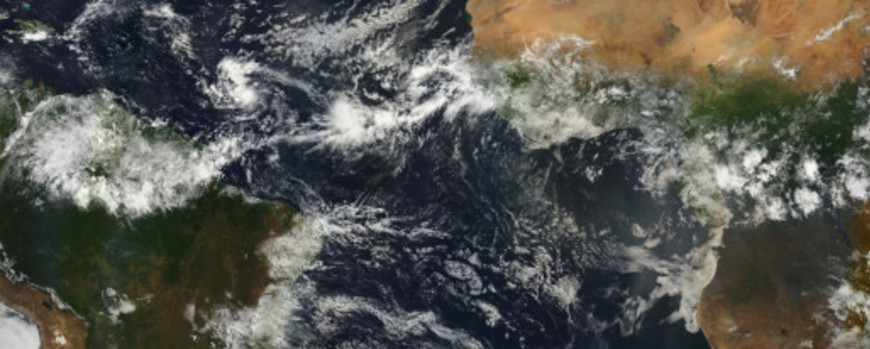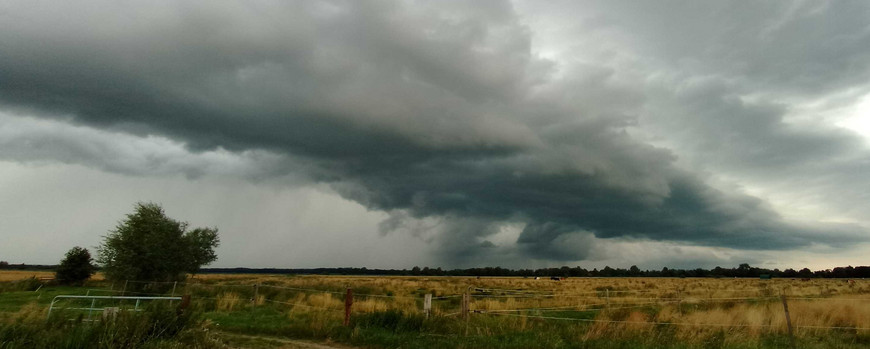The Climate Physics research group deals with self-organizing mechanisms in Earth's atmosphere. A special focus is on deep convection (thunderstorms), their clustering and associated formation of extreme precipitation events. Deep convective events, typical of the tropical atmosphere and also for mid-latitude summer, are numerically challenging objects as the organizational mechanisms likely require numerical grid resolutions finer than one kilometer, a resolution that is currently still costly to achieve in climate simulations. For this reason it is important to better understand the processes, i.e., interaction mechanisms, leading to the self-organization. Concurrently, organized deep convective clusters also interact with the larger-scale environment, such as equatorial waves.
Convective self-organization. By this we refer to organized, that is, non-random, patterns of thunderstorm cells that form because of internal interactions, not because of the effect of the specific boundary conditions. Think of bird-flocking or pattern formation in condensed matter physics, where organization comes "from within" and leads to emergent, system scale structure.


